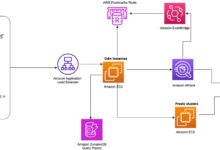AWS Calculator: 7 Powerful Tips to Master Cost Estimation
Want to predict your cloud costs with precision? The AWS Calculator is your ultimate tool for estimating, optimizing, and managing expenses across Amazon Web Services. In this comprehensive guide, we’ll break down everything you need to know to use it like a pro.
What Is the AWS Calculator and Why It Matters

The AWS Calculator, officially known as the AWS Pricing Calculator or AWS Cost Calculator, is a free online tool provided by Amazon Web Services to help users estimate the cost of using AWS resources. Whether you’re launching a small website or managing a global enterprise infrastructure, understanding your potential spend is critical. This tool allows you to model different scenarios, compare services, and forecast monthly or annual bills with remarkable accuracy.
Understanding the Official Name and Purpose
Although commonly referred to as the ‘AWS Calculator’, the official name is the AWS Pricing Calculator. It serves as a centralized hub where users can build detailed cost models for virtually any AWS service combination. From EC2 instances and S3 storage to Lambda functions and RDS databases, the calculator supports over 200 services.
Its primary purpose is to eliminate guesswork in cloud budgeting. By inputting specific usage parameters—such as instance types, data transfer volumes, and storage duration—you can generate a realistic projection of your cloud expenditure before deploying a single resource.
How It Differs from Other AWS Cost Tools
It’s important to distinguish the AWS Calculator from other cost management tools offered by AWS, such as AWS Cost Explorer, AWS Budgets, and AWS Trusted Advisor. While these tools focus on monitoring and optimizing *existing* usage, the AWS Calculator is designed for *planning* future deployments.
- AWS Calculator: Used for pre-deployment cost modeling.
- Cost Explorer: Analyzes historical spending patterns.
- Budgets: Sets alerts when spending exceeds thresholds.
- Trusted Advisor: Recommends cost-saving actions based on current configurations.
Using the AWS Calculator early in your planning phase ensures that you’re not blindsided by unexpected charges later on.
“The AWS Pricing Calculator is one of the most underutilized tools in the AWS ecosystem. Teams that skip it often face budget overruns within weeks of deployment.” — Cloud Architect, AWS Certified Professional
Key Features of the AWS Calculator That Save You Money
The power of the AWS Calculator lies in its granular control and flexibility. It doesn’t just give you a ballpark figure—it enables detailed financial modeling that can directly influence architectural decisions. Let’s explore the standout features that make this tool indispensable for cost-conscious organizations.
Service-Specific Cost Modeling
One of the most powerful aspects of the AWS Calculator is its ability to model costs at the service level. You can add individual AWS services to your estimate and configure them with real-world parameters. For example:
- For Amazon EC2, you can select instance families (e.g., t3, m5, c5), specify operating systems, choose tenancy (shared or dedicated), and even factor in Reserved Instance discounts.
- For Amazon S3, you can define storage classes (Standard, Intelligent-Tiering, Glacier), estimate PUT/GET requests, and include data retrieval fees.
- For AWS Lambda, you input the number of invocations, average execution time, and memory allocation to calculate pay-per-use costs.
This level of detail ensures that your estimates are not just theoretical but closely aligned with actual usage patterns.
Regional Pricing Adjustments
Cloud costs vary significantly depending on the AWS region you choose. The AWS Calculator automatically applies regional pricing, allowing you to compare costs across locations like US East (N. Virginia), EU (Ireland), or Asia Pacific (Tokyo). This is crucial because:
- Data transfer costs differ between regions.
- Some services may not be available in certain regions.
- Local compliance requirements might influence your region choice.
By toggling between regions in the calculator, you can identify the most cost-effective location for your workload without compromising performance or regulatory needs.
Support for Reserved Instances and Savings Plans
If you’re planning long-term workloads, the AWS Calculator lets you model savings from Reserved Instances (RIs) and Savings Plans. These are billing discounts offered by AWS in exchange for commitment terms (1 or 3 years).
When configuring an EC2 instance, for example, you can toggle between On-Demand, Reserved, and Savings Plan pricing models. The calculator will show:
- Upfront payment requirements (if any).
- Hourly effective rate after discount.
- Total savings over one or three years.
This helps justify capital expenditure decisions and demonstrates ROI for committed usage.
Step-by-Step Guide to Using the AWS Calculator
Now that you understand what the AWS Calculator can do, let’s walk through how to use it effectively. Whether you’re a developer, DevOps engineer, or finance manager, this step-by-step process will help you build accurate cost models.
Creating Your First Estimate
1. Go to https://calculator.aws and click “Create estimate”.
2. Choose a name for your project (e.g., “E-Commerce Platform Q3 Launch”).
3. Select the AWS services you plan to use. You can search by service name or browse categories like Compute, Storage, Databases, and Networking.
4. Add each service to your estimate and configure its settings.
For instance, if you’re adding an EC2 instance:
– Select the instance type (e.g., m5.large)
– Choose the operating system (Linux, Windows, etc.)
– Specify the number of instances
– Set the usage hours per day and days per month
The calculator updates the total cost in real time as you make changes.
Configuring Advanced Settings
Once basic services are added, dive into advanced configurations:
- Networking: Include data transfer costs (inbound vs. outbound), VPC endpoints, and NAT gateway usage.
- Security: Add AWS WAF, Shield, or KMS key usage if applicable.
- Management Tools: Factor in CloudWatch alarms, Config rules, or Systems Manager sessions.
These may seem minor individually, but collectively they can add up to significant costs—especially at scale.
Exporting and Sharing Your Estimate
After finalizing your model, you can export the estimate as a CSV file for further analysis in Excel or Google Sheets. This is useful for:
- Presenting to stakeholders or finance teams.
- Integrating with internal budgeting systems.
- Tracking changes over time as requirements evolve.
You can also share a direct link to your estimate with collaborators, enabling team-based planning and review.
Common Mistakes When Using the AWS Calculator
Despite its power, many users make avoidable errors when using the AWS Calculator. These mistakes can lead to inaccurate forecasts and budget overruns. Let’s examine the most common pitfalls and how to avoid them.
Underestimating Data Transfer Costs
One of the biggest blind spots in cloud cost estimation is data transfer. While inbound data to AWS is free, outbound data (from AWS to the internet) is charged per gigabyte. Many users forget to account for:
- CDN bypass traffic (e.g., users downloading large files directly from S3).
- Inter-region replication (e.g., syncing data from us-east-1 to eu-west-1).
- API calls to external services via NAT gateways.
To avoid surprises, always estimate your expected outbound data volume conservatively. Use the calculator’s networking section to input realistic transfer amounts.
Ignoring Hidden or Indirect Costs
Some AWS costs aren’t immediately obvious. For example:
- ELB (Elastic Load Balancer) hourly charges and request fees.
- EBS snapshot storage costs, which accumulate over time.
- Route 53 DNS query charges for high-traffic websites.
The AWS Calculator includes these, but only if you explicitly add them. Failing to include supporting services can result in estimates that are 20–30% lower than actual costs.
“We launched our app with a $2,500/month estimate from the AWS Calculator. Three months later, our bill was $4,000. We forgot to include CloudWatch logs and data transfer costs.” — Startup CTO, Reflecting on Early Mistakes
Overlooking Future Scalability Needs
Another common mistake is modeling only current usage without considering growth. A system that handles 10,000 users today might need to support 100,000 in six months. The AWS Calculator allows you to create multiple scenarios:
- Baseline (current needs).
- Growth Phase 1 (+50% load).
- Peak Season (2x normal traffic).
By building scalable models upfront, you can anticipate cost increases and plan for Reserved Instances or auto-scaling policies accordingly.
Advanced Strategies for Optimizing AWS Costs with the Calculator
Once you’ve mastered the basics, you can use the AWS Calculator for strategic financial planning. Here are advanced techniques that top cloud architects use to maximize ROI.
Comparing On-Demand vs. Reserved Instances
The calculator makes it easy to compare different pricing models. For stable, predictable workloads (like databases or backend servers), Reserved Instances often offer 40–75% savings compared to On-Demand pricing.
To perform this comparison:
- Create two identical estimates.
- In one, keep all instances as On-Demand.
- In the other, convert them to 1-year or 3-year Reserved Instances with partial or full upfront payment.
- Compare the total monthly cost.
This side-by-side analysis helps justify the business case for committing to long-term usage.
Modeling Multi-Account and Multi-Region Architectures
Enterprises often run workloads across multiple AWS accounts (for security or billing separation) and regions (for disaster recovery or latency reduction). The AWS Calculator supports complex architectures by allowing you to:
- Add multiple EC2 instances across different regions.
- Simulate cross-account data sharing via AWS Resource Access Manager (RAM).
- Estimate costs for AWS Transit Gateway or Direct Connect for hybrid cloud setups.
This capability is essential for large-scale migrations or global deployments.
Leveraging the Calculator for FinOps Practices
FinOps (Financial Operations) is a growing discipline that brings financial accountability to cloud spending. The AWS Calculator plays a key role in FinOps workflows by enabling:
- Cost attribution to teams or projects.
- Scenario planning for cloud migration (e.g., lift-and-shift vs. re-architected).
- Chargeback or showback reporting models.
By integrating the calculator into your FinOps pipeline, you can foster a culture of cost awareness across engineering and finance teams.
Integrating the AWS Calculator with Other AWS Tools
The true power of the AWS Calculator emerges when it’s used in conjunction with other AWS services and tools. While it’s a planning tool, its outputs can inform real-time monitoring and optimization strategies.
Linking Estimates to AWS Cost Explorer
After deployment, use AWS Cost Explorer to compare actual spending against your original estimate from the AWS Calculator. This feedback loop helps refine future estimates and identify discrepancies.
For example, if your calculator predicted $3,000/month but Cost Explorer shows $4,500, investigate which services exceeded expectations. Was it unexpected Lambda invocations? Unoptimized S3 storage? This insight improves forecasting accuracy over time.
Using Budgets Based on Calculator Projections
Once you have a reliable estimate, create an AWS Budget tied to that amount. For instance, if your calculator shows a $5,000/month projection, set a budget alert at 80% ($4,000) and 100% ($5,000).
This proactive approach prevents bill shock and allows teams to adjust resources before costs spiral out of control.
Automating Estimates with AWS CLI and APIs
While the AWS Calculator itself doesn’t have a public API, AWS provides programmatic access to pricing data via the AWS Price List API. Developers can build custom cost estimation tools that pull real-time pricing and generate reports similar to the AWS Calculator.
This is especially useful for SaaS companies or managed service providers who need to generate client-specific cost models at scale.
Real-World Use Cases of the AWS Calculator
The AWS Calculator isn’t just for theoretical planning—it’s used daily by organizations worldwide to make real business decisions. Let’s look at some practical applications.
Startup MVP Cost Planning
A tech startup building a Minimum Viable Product (MVP) used the AWS Calculator to stay within a $5,000 seed funding limit. They modeled:
- 2 t3.medium EC2 instances for the backend.
- 1 RDS db.t3.micro database.
- 500 GB of S3 storage for user uploads.
- Estimated 200 GB of outbound data transfer monthly.
The calculator showed a total cost of $4,800/month, leaving room for marketing and development. This precision helped them secure additional funding with confidence.
Enterprise Cloud Migration Forecast
A Fortune 500 company migrating from on-premises data centers to AWS used the calculator to estimate a three-year TCO (Total Cost of Ownership). They compared:
- Current hardware depreciation and maintenance costs.
- Projected AWS spend using Reserved Instances.
- Migration tooling (AWS DMS, Snowball) and training expenses.
The analysis revealed a 30% cost reduction over three years, which was instrumental in gaining executive approval.
E-Commerce Site During Black Friday
An online retailer used the AWS Calculator to prepare for peak traffic. They modeled:
- Auto-scaling groups increasing from 10 to 50 EC2 instances.
- 10x increase in RDS read replicas.
- 5 TB of additional CloudFront data transfer.
The estimate predicted a $12,000 spike during the holiday week. Armed with this data, they pre-purchased Savings Plans and avoided performance bottlenecks.
What is the AWS Calculator?
The AWS Calculator is a free online tool from Amazon Web Services that helps users estimate the cost of using AWS services before deployment. It supports detailed modeling of compute, storage, networking, and other resources across multiple regions and pricing models.
Is the AWS Calculator accurate?
Yes, the AWS Calculator uses real-time pricing data and is highly accurate when configured correctly. However, accuracy depends on how precisely you input your expected usage. Underestimating data transfer or forgetting services can lead to discrepancies.
Can I save and share my estimates?
Yes, you can save your estimates in the AWS Calculator and share them via a unique URL. You can also export the data to CSV for analysis in spreadsheets or presentations.
Does the AWS Calculator include all AWS services?
It includes over 200 AWS services, covering the vast majority of offerings. However, some newer or niche services may not be immediately available. AWS regularly updates the calculator to add support for new services.
How does the AWS Calculator help with cost optimization?
By allowing you to model different configurations, regions, and pricing models (like Reserved Instances), the AWS Calculator helps identify the most cost-effective architecture before deployment, reducing waste and over-provisioning.
Mastering the AWS Calculator is a game-changer for anyone using Amazon Web Services. It transforms cloud cost management from guesswork into a strategic, data-driven process. Whether you’re launching a startup, migrating enterprise workloads, or scaling for peak traffic, this tool empowers you to forecast, compare, and optimize your spending with confidence. Use it early, use it often, and integrate it into your financial planning workflow to get the most value from your AWS investment.
Recommended for you 👇
Further Reading:









